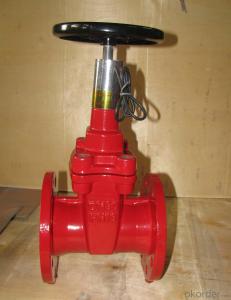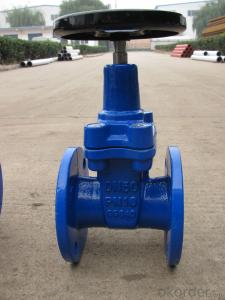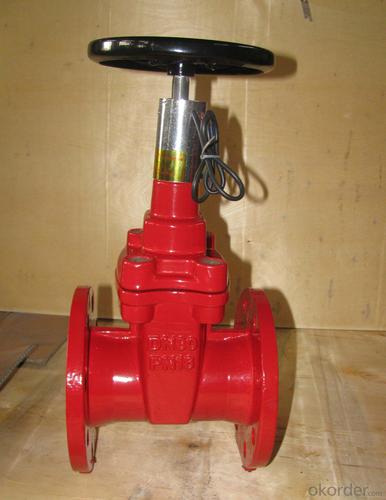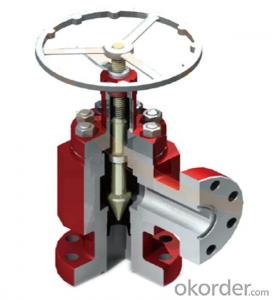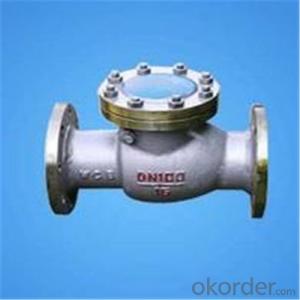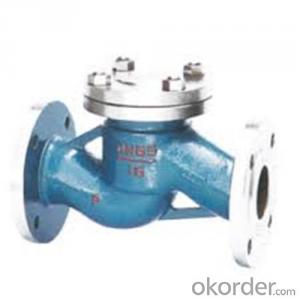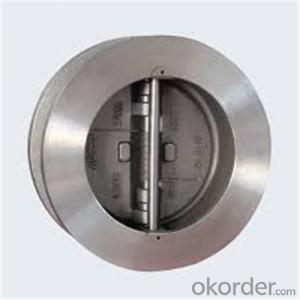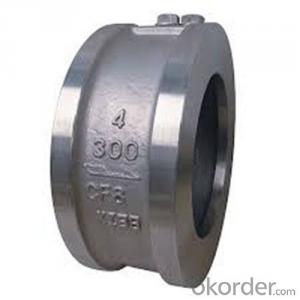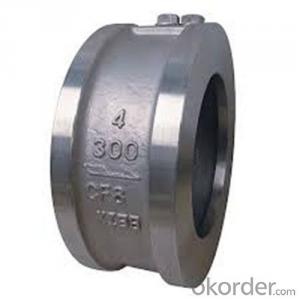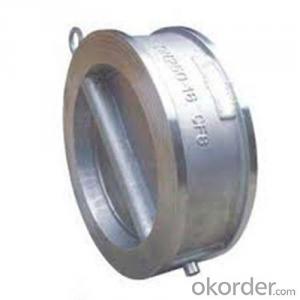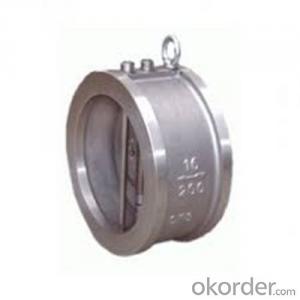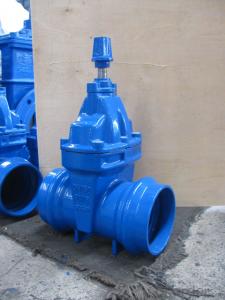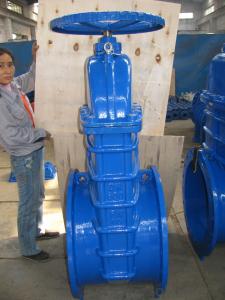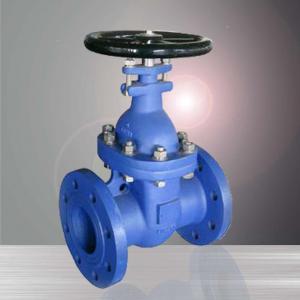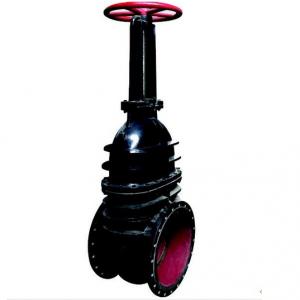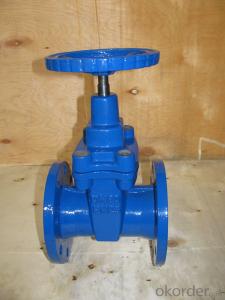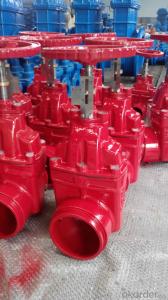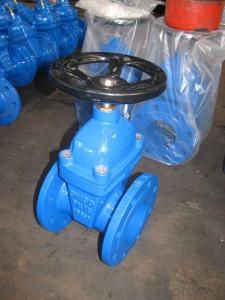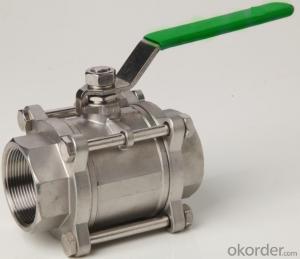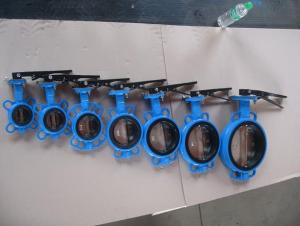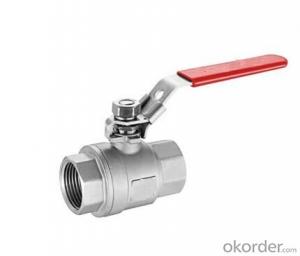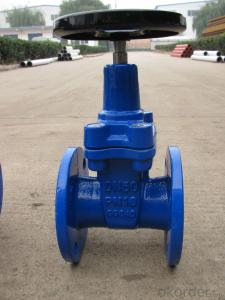Rising Stem Solid Wedge Gate ValveDN40-DN600
- Loading Port:
- China Main Port
- Payment Terms:
- TT OR LC
- Min Order Qty:
- -
- Supply Capability:
- -
OKorder Service Pledge
OKorder Financial Service
You Might Also Like
Type: | Non-Rising Stem |
Material: | Body: Cast Iron / Ductile Iron Wedge: Cast Iron / Ductile Iron Encapsulated with EPDM Seat: EPDM / NBR Shaft: SS410 Stem Nut: Brass O-ring: EPDM, NBR Wedge Nut: Brass / Bronze Hand Wheel: Ductile Iron
|
Operator: | Hand Wheel / Bevel Gearing / Square head / Electric actuator |
Face to Face: |
BS5163: 1986, DIN 3202 F4-F5, JIS B2002, ANSI B16.10
|
Flange: | BS4504, DIN 2532, JIS B2212, ANSI B16.10/ANSI B16.50
|
Working Pressure: | 16 Bar(200 PSI) |
Design and Manufacturer Standard : | BS5163, DIN 3352, JIS B2043 |
Test Standard: | API 598 BS6755 DIN 3230 JIS B2003 |
Application: | Water works, Sewage, Public facilties, Building industry, Petroleum, Chemical, Steel, Metallurgy, Paper Making Industry, Foods, Beverage, HVAC |
| | | | ||||||||
| | | | ||||||||
| | | | ||||||||
| | | | ||||||||
| | | | ||||||||
| | | | ||||||||
| | | | ||||||||
| | | | ||||||||
- Q: I have a stainless valve I want to install in a copper domestic water line. My concern is: are the two metals compatible? Are stainless steel and galvanized steel compatible?
- 1
- Q: please i want theory of MOTORIZED VALVE ? COURSE TITLE : MEASUREMENT AND CONTROL EXP. TITLE : CALIBRATION AND CHARACTERISTICS OF MOTORIZED VALVE
- Your question is too broad for this forum Google your question Motorized valves Motorized actuators Hope this properly answers your question
- Q: I opened the OPD valve on the BBQ propane tank and propane spray out, I have heard that propane should come out only when it is hooked. Is there something wrong with the propane tank?
- == it is correct that when the valve is opened without being attached to the BBQ machine it will spew propane gas into the air .... the tank is fine and you noticed the foul odor to the gas and that is put into the gas so you can detect that there might b
- Q: where is the bleed valve in a 97 taurus????thank you
- Which okorder put in your car facts and go to repair
- Q: What are a sing of a bad Idle control valve, will this cause bad mpg?
- Generally, a bad ICV will either be stuck open from carbon or dirt making the idle stay too high. Or dead which usually kills the engine when put in gear. Mileage would be affected, but if it idles good, it's probably ok.
- Q: In the very near future I'm having valve replacement surgery. I haven't yet been told the risks or the recovery period, does anyone know the risks or the recovery stages and how long recovery takes?
- Valve replacements actually have very low morality rates like 1-2%. There are always risk's with surgery though, such as blood clots or irregular heart rate. The recovery in the hospital is generally 5-7 days, and then it can take anywhere from 8 weeks to a year to feel recovered.
- Q: Where is the PCV valve located on 2001 Nissan Altima
- Pcv Valve Nissan Altima
- Q: List the valves that control the flow of substances through the alimentary canal. I can't find this answer?
- The gastrointestinal tract is thus equipped at critical junctures with a number of muscular valves, or sphincters , which, usually under the direction of the autonomic nervous system, can regulate the movement of food through the digestive tube. Another function of a sphincter is to prevent backflow of partially digested food. The muscles of a sphincter are often described as “pursestring muscles” because the way they draw together the sides of the digestive tube is roughly similar to drawing up the strings of a purse. The first of these pursestring valves occurs at the cardia , the opening where the esophagus meets the stomach, and is called the cardiac sphincter , from its location almost directly in front of the heart. (But there is no physical connection.) Another important muscle ring is the pyloric sphincter , at the opening called the pylorus , located at the other end of the stomach, at the connection between stomach and small intestine. The release of waste from the rectum is controlled, partly voluntarily, by an anal sphincter , located at the anus , which marks the end of the tract.
- Q: If you suffer from Heart Valve Disease why do you get tired or struggle breathing?
- Heart valves are barriers, described as doors by the Texas Heart Institute (see Resources) that control how the blood flows through the heart, and ultimately throughout the body. When one of the four heart valves becomes diseased or damaged, you are at risk for more serious heart problems because your body must work too hard to get the blood flowing. There are several causes of heart valve disease that can be treated through medications and corrective surgery. Infection Heart valve disease can be caused by certain types of infection. Older people who had rheumatic fever before antibiotics were used to treat the disease may have sustained heart valve damage. Infection of the valves themselves and the walls of the heart can cause heart valve disease. Congenital Causes Some people have heart valve disease simply due to how they were born. Congenital defects of the heart include a mitral valve that is narrower than usual, or a misshapen aortic valve. Tissue Degeneration Older people may have valve dysfunction due to a degeneration of the tissue of the mitral valve. This condition is called myxomatous degeneration. Thickening A thickening of the valve itself, most often in the aortic and mitral valves, can lead to valve disease. This is another cause that is more commonly seen in the elderly. Heart Disease You can develop heart valve disease if you have had other types of heart problems, including coronary artery disease or a heart attack.
- Q: my Hunter SVC VALVE will not work with my Lawn Genie Valve. Is this becaous the voltage is not matched? Hunter says it operates solenoids at 6-9 v DC // Lawn Genie says it is an 18 v DC solenoid. :-( my original Hunter Valve broke and I replaced it with the Lawn Genie. Should I get a Hunter Valve , or a Lawn Genie Controller at this point/ or is there something I have overlooked?.
- Something is incorrect. All valve solenoids and all timers are designed to work at 24 v DC It should make no difference which brand of clock or which brand of valve you are using. Now the actual solenoid which is the circular cylinder with the wires coming out of it that screws into the valve may not fit all brands of valves but you can buy the correct brand to fit your valve at any irrigation supplier. If your controller is working with at least one valve it should work with any valve you have installed. I would look at the wiring and see that they are correctly installed and connected especially at the valve. If one of the two wires is loose or connected wrong then you wont get the valve to operate. If you have a voltage meter I would test it with that. If not make sure at least one wire from each valve is connected to the white (or nuetral wire) out of the controller and the other valve wire is connected to one of the hot wires coming out of the controller. If one valve does not work try connecting a hot wire off a working valve to the non working valve and test it. If it works your problem is in the wire you disconnected. I constantly work on sprinkler systems and wiring is no. one problem. Incidently I cant find a SVC valve listed in the Hunter catalog did you get the letters mixed up?
Send your message to us
Rising Stem Solid Wedge Gate ValveDN40-DN600
- Loading Port:
- China Main Port
- Payment Terms:
- TT OR LC
- Min Order Qty:
- -
- Supply Capability:
- -
OKorder Service Pledge
OKorder Financial Service
Similar products
Hot products
Hot Searches
Related keywords
